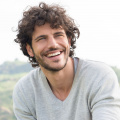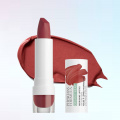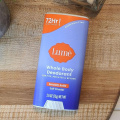Child’s Pose Benefits And Steps to Practice It Perfectly
Child’s Pose is a cornerstone of yoga, offering a blend of rest and subtle engagement. Here are some amazing Child’s pose benefits to learn about.
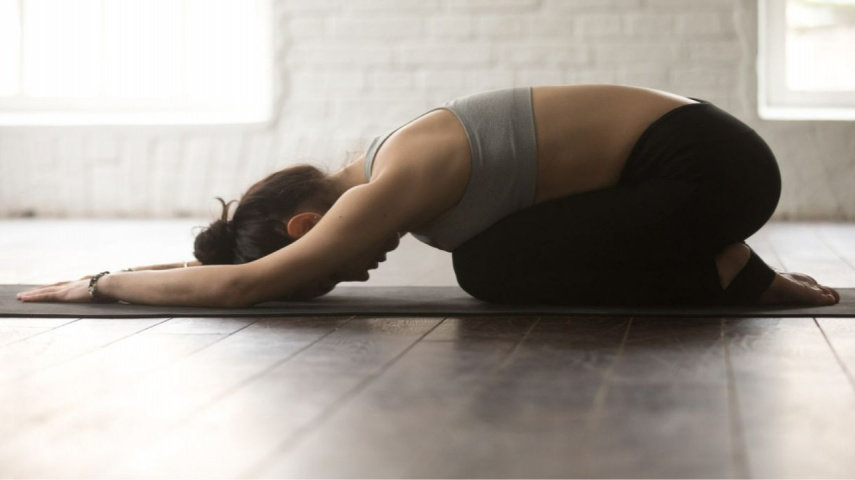
Yoga offers dynamic movement and tranquil stillness, and within this journey lies the essence of Child’s Pose. This foundational posture, known as Balasana in Sanskrit, acts as a resting posture in the midst of yoga's physical demands. While it may appear simple, Child’s pose benefits are numerous. The pose embodies the profound principle that, sometimes, stillness can be as transformative as action.
According to our contributor Bayu Prihandito, who is a Life Coach, and RYT 200 Yoga Teacher, “Child’s Pose is generally considered a restorative and beginner-friendly posture, offering your back and hips a gentle stretch. It's relaxing but engages many body parts at the same time.”
Child’s Pose isn’t just about physical rest; it's a practice of patience and surrender. With arms outstretched, the pose engages the back, shoulders, and arms, offering a gentle stretch while promoting a sense of grounding. The act of compressing the body against the earth in Balasana can be a physical and emotional journey, inviting practitioners to explore their limits and learn to relax into the embrace of the pose. This surrender isn't passive but an active engagement with the present moment, an exercise in mindful stillness.
This pose, though uncomplicated in its form, serves as a gateway to deeper yoga practice. It teaches the invaluable lesson of letting go — of expectations, of tension, and of the constant need to be doing something. In Child’s Pose, we find a microcosm of yoga's broader philosophy — the balance between effort and ease, doing and being, movement and stillness. As we fold into the pose, we’re reminded that every part of our yoga practice, from the simplest to the most complex pose, is a step towards inner peace and self-awareness.
What is a Child’s Pose in Yoga?
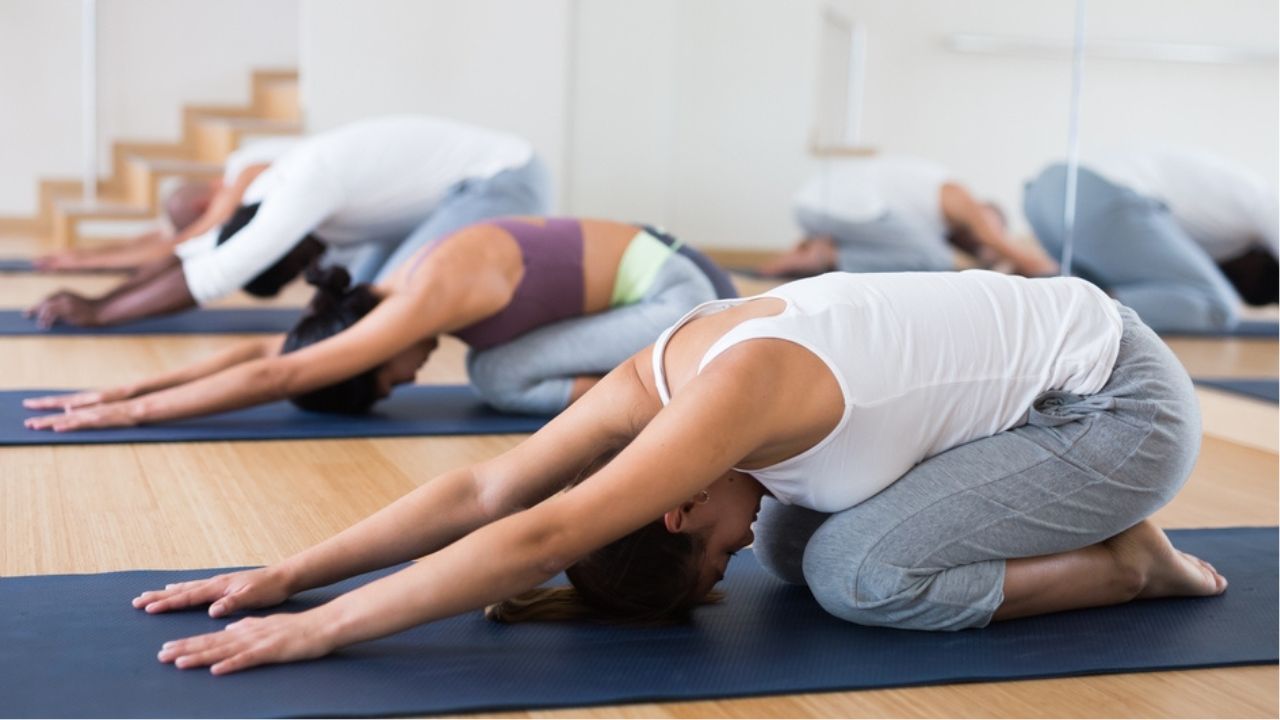
Balasana, or Child's Pose, is a restful yoga posture effective for beginners and experienced practitioners. The name 'Balasana' is a Sanskrit word. 'Bala', refers to 'child', and 'asana', means 'posture' or 'seat'. This pose resembles how a child might comfortably sit on their heels.
In the seated Child’s Pose, the body is folded forward with the forehead resting on the ground, arms extended in front or by the sides, and the buttocks resting on the heels. This position allows for a gentle stretch along the spine, hips, thighs, and ankles. It's commonly used as a resting pose throughout yoga sessions, providing a moment of relaxation and introspection between more intense asanas.
Child's Pose in Yoga is more like a return to a state of simplicity and ease, a reminder of the comfort and calmness associated with childhood. This pose offers a moment to pause, breathe, and reconnect with their inner sense of peace. It's particularly beneficial for relaxing the muscles along the spine, including the spinal extensors, and can aid in gently stretching the gluteus medius and hamstrings.
What Muscles Does Child’s Pose Work?
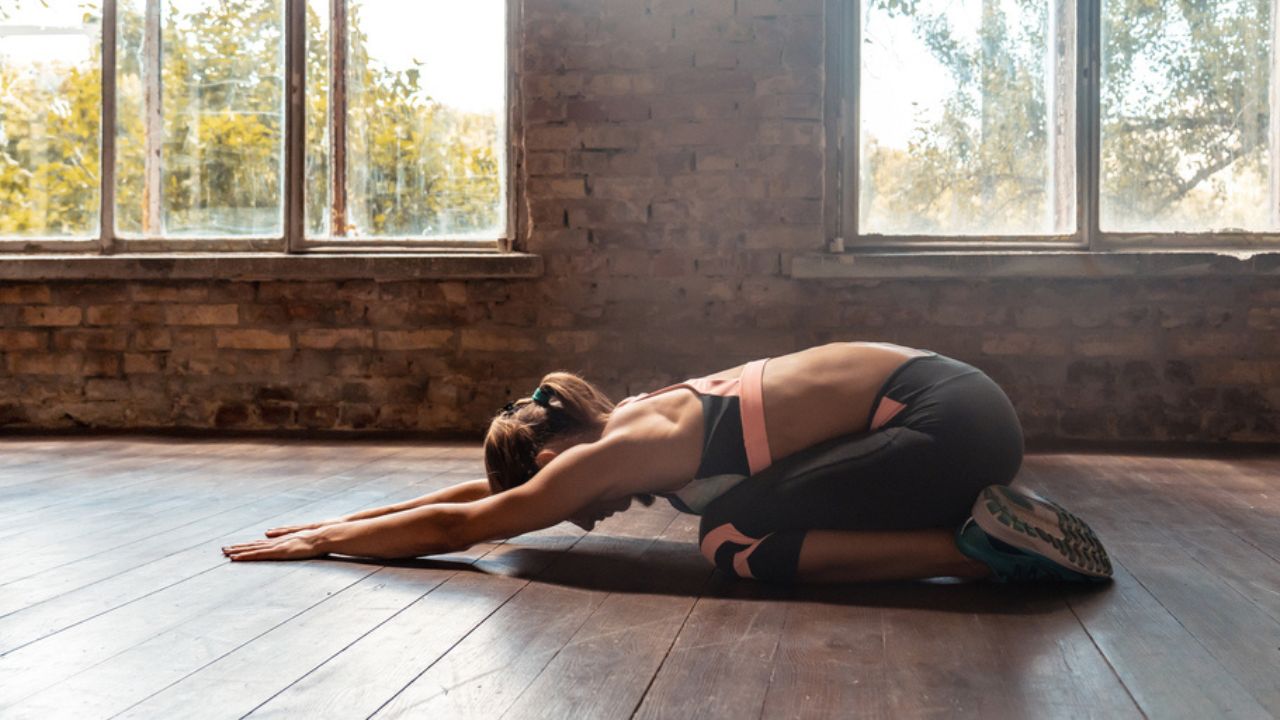
Child’s Pose, or Balasana, primarily serves as a relaxing and therapeutic posture in yoga, impacting various muscle groups in a gentle yet profound way. This pose doesn't aim to strengthen muscles but focuses on stretching and relaxing them. Here are some muscles/muscle groups that benefit from Child’s Pose:
1. Trapezius Muscles: These large muscles in the upper back are stretched, helping to alleviate tension in the neck and shoulders.
2. Erector Spinae Muscles: This group of muscles running along the spine receives a gentle stretch, aiding in maintaining spinal health and flexibility.
3. Latissimus Dorsi Muscles: Located in the mid to lower back, these muscles are involved in the extension and movement of the shoulders and arms. Child’s Pose helps in their relaxation.
4. Teres Major Muscles: These muscles, near the shoulders and underarms, work in tandem with the latissimus dorsi, benefiting from the pose's stretching effect.
5. Oblique Muscles: The internal and external obliques along the sides of the abdomen are gently stretched, promoting flexibility and aiding in rotational movements.
6. Gluteus Muscles: Including the gluteus maximus, medius, and minimus, these muscles experience relief from tension and are highly beneficial for those who sit for long periods.
7. Hip Flexor Muscles: The pose aids in stretching the hip flexors, which include the iliacus, psoas major, rectus femoris, and sartorius muscles, countering the tightness often caused by prolonged sitting.
Besides these muscles, Child’s Pose also helps in calming the mind, activating the parasympathetic nervous system (the body's relaxation response), and may alleviate symptoms of stress, headaches, migraines, and PMS. It's a holistic posture, offering both physical and mental benefits.
10 Surprising Benefits of Child’s Pose
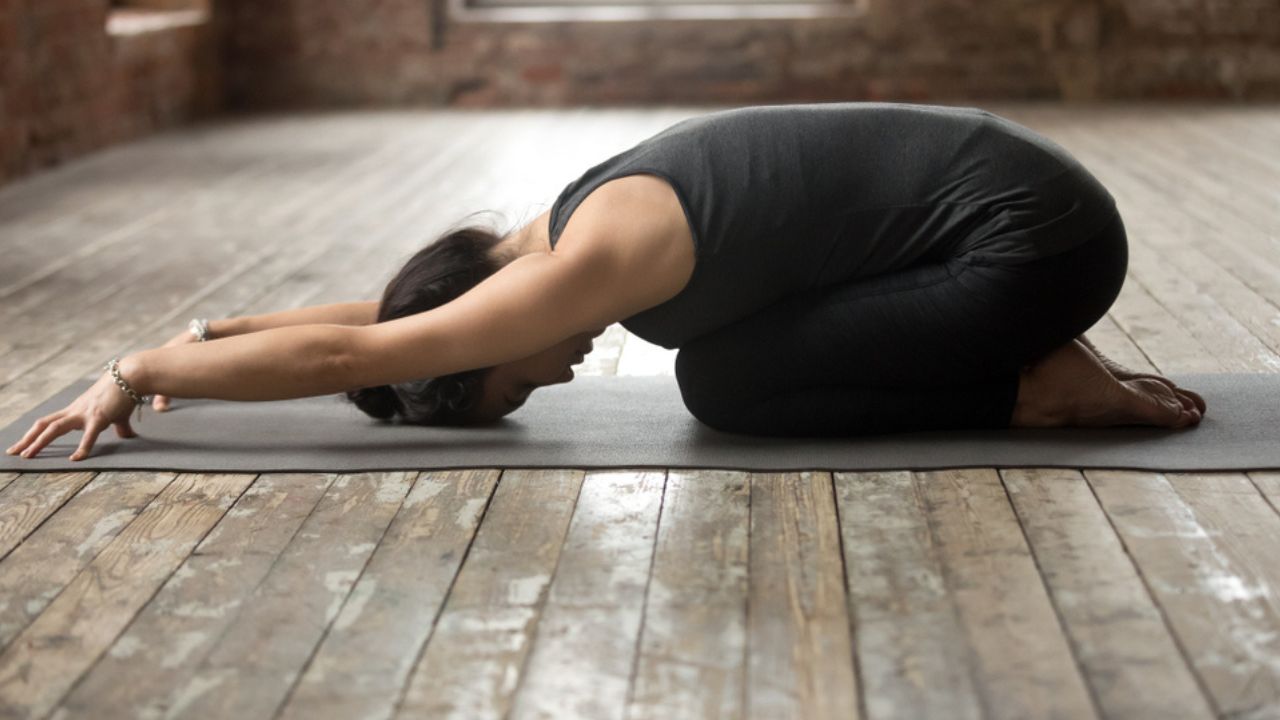
Child's Pose, or Balasana, is celebrated for its gentle approach and profound impact on the mind and body. This seemingly simple pose is packed with many benefits, extending far beyond its basic appearance.
1. May Increase Body Flexibility
One of Child’s Pose's primary benefits is its gentle stretching. As you fold forward, your spine, thighs, hips, and ankles receive a soothing stretch (1). This not only enhances flexibility but also helps in releasing tension from these areas.
Regular practice of Balasana can lead to a noticeable improvement in your overall flexibility and range of motion.
2. May Relax Your Body
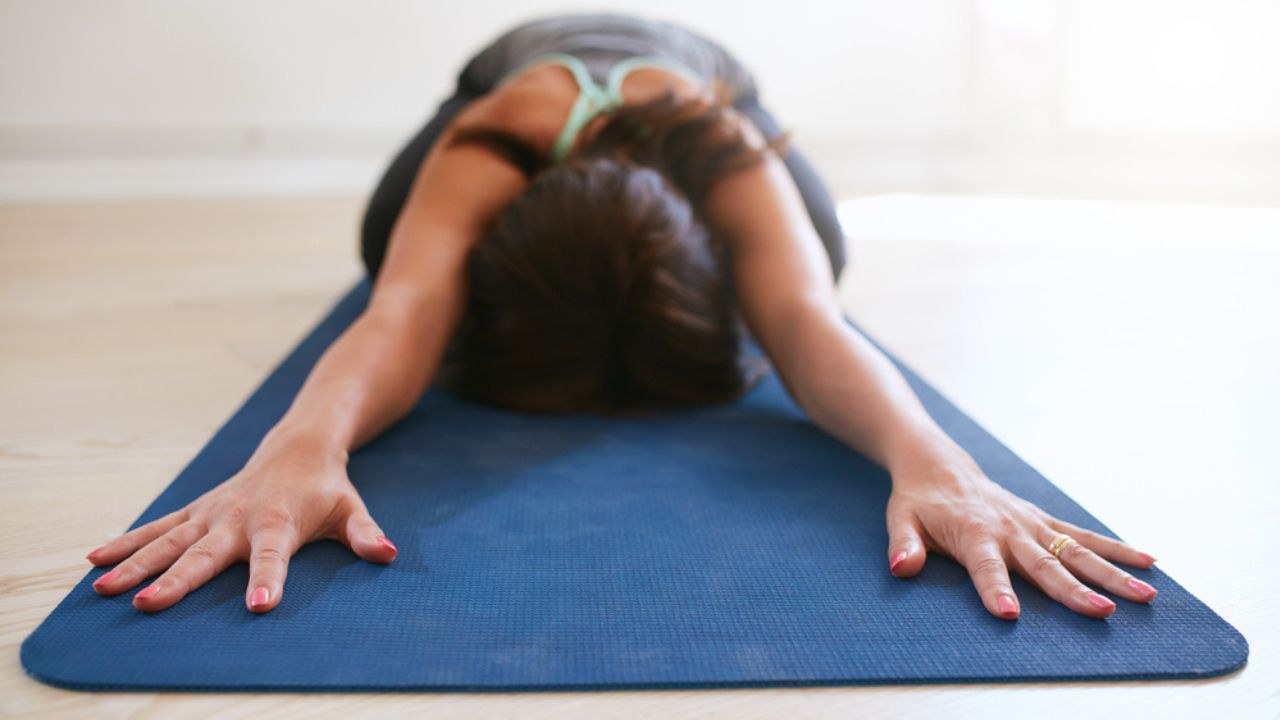
Child’s Pose is a haven for relaxation. As you settle into the pose and focus on deep breathing, it helps calm the mind, reducing symptoms of anxiety and fatigue (2).
This calming effect is not just psychological; the physical posture combined with controlled breathing promotes a state of mental tranquility, making it an excellent practice for winding down after a stressful day.
3. May Boost Blood Circulation
The positioning of the body in the Child’s Pose can lead to increased blood circulation, especially to the head. Improved circulation enhances overall brain function and can help alleviate headaches and promote a sense of mental clarity (3).
4. May Improve Digestion
Balasana can have a positive effect on digestion. The light compression of the stomach during the pose stimulates the digestive organs, potentially aiding in more efficient digestion and alleviating issues such as bloating or constipation (4).
5. May Ease Muscle Stiffness
One of the most appreciated benefits of Child’s Pose is its ability to release tension in key areas like the lower back, chest, hamstrings, and shoulders (5).
6. May Enhance Lung Function and Chest Pain Relief
The deep breathing involved in Child’s Pose can have a therapeutic effect on the lungs and may help in alleviating chest and neck pain (6). The expansion of the rib cage during the pose allows for deeper inhalations, which can be beneficial for those with respiratory issues.
7. May Reduce Lower Back Discomfort
For individuals who spend extensive time sitting, Balasana can be a practical exercise to alleviate back pain (5). The pose aids in lengthening and contracting the spinal, back, and hip muscles simultaneously, offering relief from body fatigue and discomfort.
8. May Have Cardiac Health Benefits
Practicing Child’s Pose can have a positive impact on heart health. The asana is known to help in lowering heart rate and reducing blood pressure, contributing to overall cardiovascular well-being (7).
9. May Relieve Stomach and Back Pain
The extension of the abdominal and lower back muscles during Child’s Pose can provide relief for stomach and lower back pain, making it a beneficial practice for those suffering from these discomforts.
10. May Help Manage Diabetes
Child’s Pose may play a role in stress management, which is a key factor in diabetes. The asana’s ability to reduce stress can potentially impact blood glucose levels positively, aiding in the management of diabetes (8).
Whether you're seeking relief from physical discomfort or mental stress or simply looking to enhance your yoga practice, Balasana is a pose that benefits everyone.
How to Do Child’s Pose: A Mini Guide
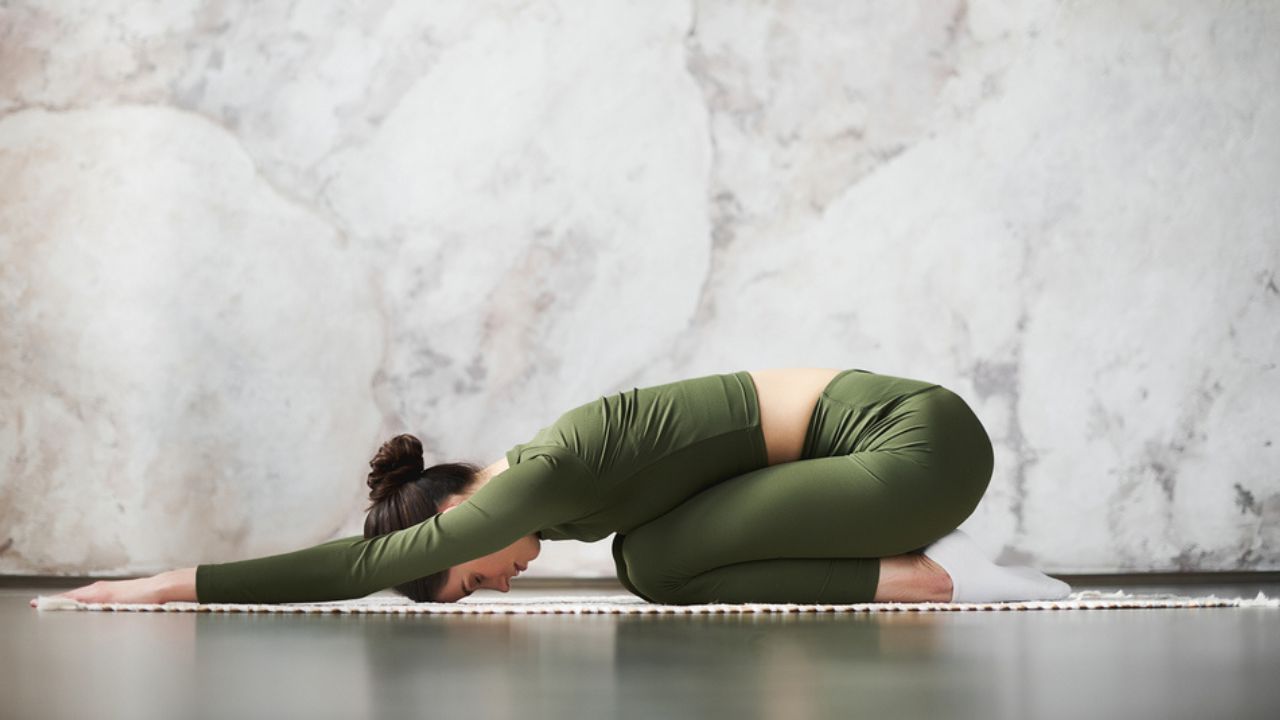
Child's Pose, known as Balasana in yoga, is a gentle and relaxing pose that is perfect for beginners or as a resting position during your yoga practice. It helps to stretch the back and neck while promoting a sense of calm and relaxation.
Let's go through the steps to get into Child's Pose.
Steps to Perform Child's Pose
1. Begin by kneeling on a yoga mat. Keep your hands and knees on the mat.
2. Put your knees wide on the mat.
3. Keep your feet together and place the tops of the feet flat on the floor.
4. Gradually place your belly between your thighs.
5. Rest your forehead on the floor. In case this is uncomfortable, use a block to rest your forehead on them. This position helps in relaxing the head and neck.
6. Allow your shoulders, jaw, and eyes to relax, releasing any tension.
7. Move your arms into any of the following positions:
Option 1: Stretch your arms forward, palms facing down.
Option 2: Place your arms alongside your thighs, palms facing up.
Option 3: For shoulder relief, stretch arms forward with palms up.
Option 4: Bend your elbows, join your palms, and rest your thumbs at the back of your neck. Inch your elbows forward for comfort.
8. Stay in this position until it makes you feel uncomfortable, focus on your slow and deep breaths.
Different Variations of Child’s Pose
Child’s Pose, or Balasana, is a versatile and gentle yoga posture, offering various modifications to suit different needs and preferences. Let's explore two popular variations that can enhance your experience of this restful pose.
Child’s Pose with a Bolster
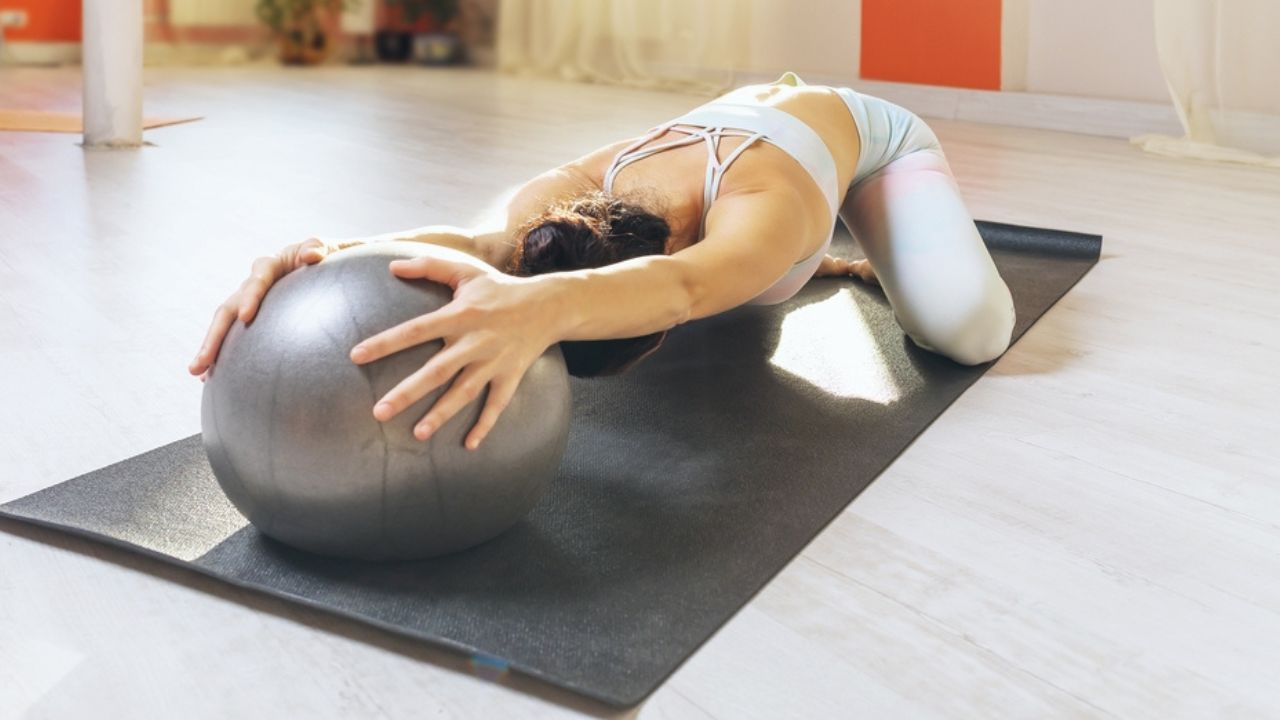
1. Start on your hands and knees.
2. Place a bolster or a medicine ball vertically between your inner thighs. Gently release your body down onto the bolster.
3. For extra comfort, use a rolled blanket or pillow between your thighs and calves.
4. Bring your forehead or cheek to rest on the bolster. Switch cheeks after a few breaths for an even stretch.
5. If you have a longer torso, place a block under your forehead or cheek to align your neck with your spine.
6. Take 8–10 deep breaths, or remain as long as comfortable.
Child’s Pose with a Block
1. Begin on your forearms and knees.
2. Place your forehead on a block.
3. Your toes can be either tucked under or released down to the floor.
4. Maintain the pose for 8–10 deep breaths or as long as it feels right.
Safely Tips to Avoid Injury While Doing Child's Pose
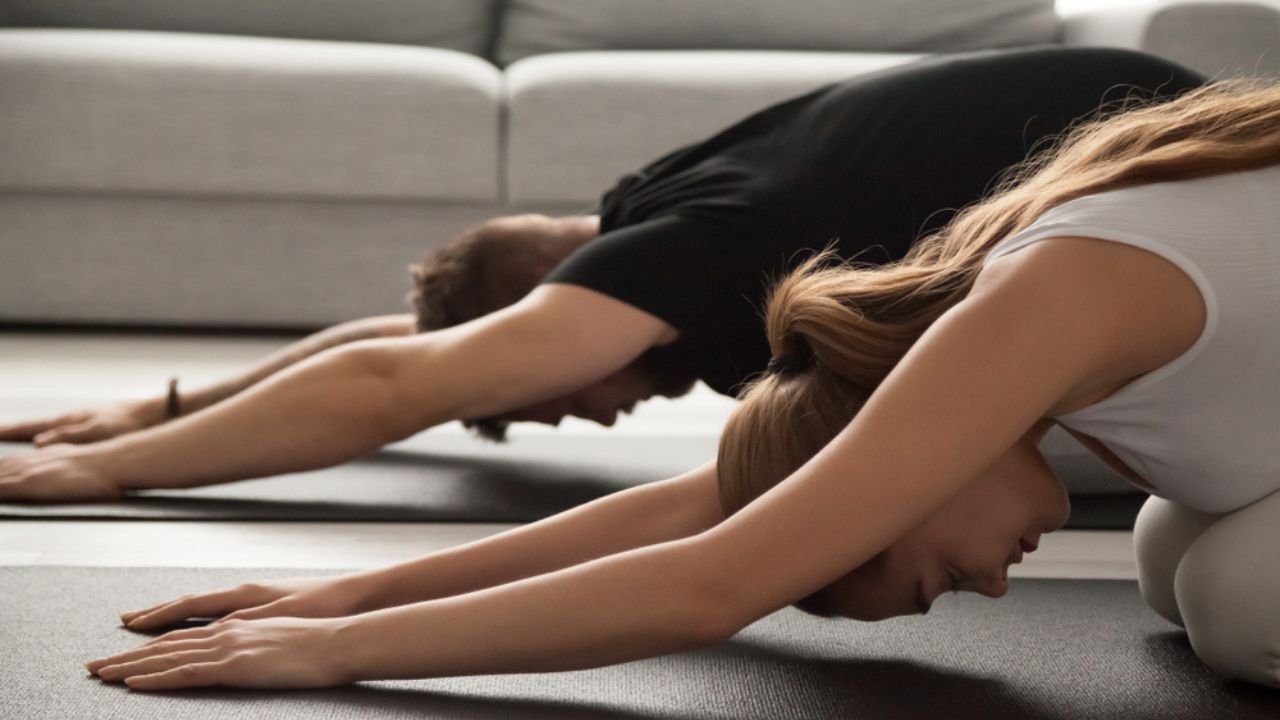
Child's position is a foundational yoga posture that offers a sanctuary of tranquility and rest. For beginners, mastering this pose can be a journey of comfort and a step towards deeper yoga practice. Here are some essential tips to help you reach the full potential of Child's Pose.
- Maintaining Proper Form in Balasana
Proper form in a Child’s posture is crucial for a safe and beneficial practice. Ensure your forehead is resting on the ground. When flexibility is an issue, placing a folded blanket under your buttocks can help bridge the gap between your sit bones and heels.
- Timing and Digestion Considerations
It’s advisable to practice Child’s Pose at least an hour after eating due to the compression it can cause on the stomach. This precaution helps in avoiding any discomfort during the pose.
- Breathing and Neck Alignment
Full and deep breathing is essential in the Child’s Pose. Focus on inhaling fully into your lungs to maximize the benefits. Keep your neck in a neutral position to avoid strain.
In case you find your neck bending, use a pillow, yoga block, or another prop to maintain a comfortable alignment and relieve any pressure.
Whether using a bolster or a block, these variations offer additional support and comfort, making Balasana more accessible and enjoyable. Remember, the key to a fulfilling Child's Yoga Pose practice lies in being mindful of your body's signals and making adjustments as needed for a safe, comfortable, and beneficial experience.
Conclusion
Child’s Pose is much more than just a simple yoga posture. Balasana, with its humble appearance, holds a treasure of benefits while offering serenity amidst life's bustling rhythm. It's a gentle reminder that sometimes, the most profound lessons are found in moments of stillness.
From relaxing body to improving flexibility — child’s pose benefits are amazing. This pose, in its simplicity, provides relaxation and gentle stretching. Whether it's the soothing stretch of the erector spinae muscles along the spine, the calming release in the trapezius muscles across the shoulders, or the gentle relief in the gluteus and hip flexor muscles, Child’s Pose is a holistic practice that nurtures both body and mind.
Adding Balasana into your yoga routine is not just about physical wellbeing; it's an invitation to cultivate inner peace and mindfulness. It encourages us to slow down, to breathe deeply, and to reconnect with the present moment. So take a step towards wellness and balance.
Contributor: Bayu Prihandito, Certified Psychology Consultant, Life Coach, and RYT 200 Yoga Teacher, Founder - Lifearchitekture
ALSO READ: Half Moon Pose: Mastering the Art of Balancing And Stretching





 JOIN OUR WHATSAPP CHANNEL
JOIN OUR WHATSAPP CHANNEL
















